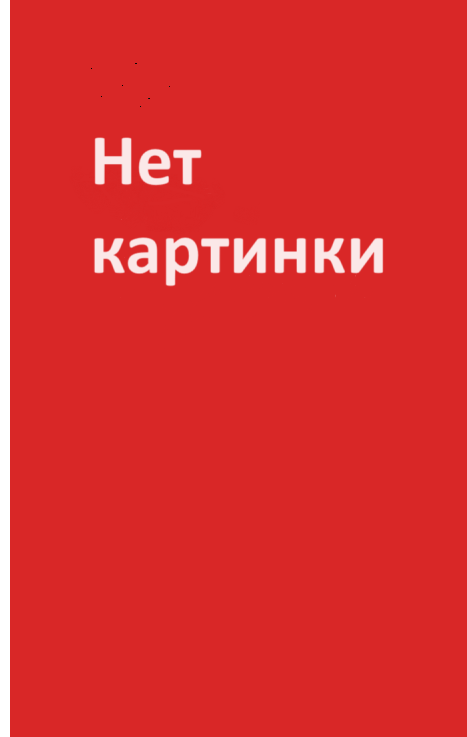Одаренные дети
Шрифт:
Другое дело – реализация одаренности. Здесь количество необходимых благоприятных факторов, конечно, увеличивается, но не настолько, что обязательно нужен их полный комплект.
Впрочем, как уже говорилось выше, тот факт, что у многих читателей могут возникнуть вопросы, сомнения и желание спорить с авторами, только увеличивает ценность и полезность книги Ф. Монкса и И. Ипенберг «Одаренные дети». Хорошие научные и тем более научно-популярные книги пишутся и для этой цели.
Виктория Юркевич профессор
руководитель Городского ресурсного центра одаренности
Литература
Aron E. (1999). The highly sensitive person. New York: Harper Collins.
Aron E. (2002). The highly sensitive child. New York: Broadway Books.
Betts G. T., Kercher J. K. (2008). Der Weg des selbstbestimmten Lernens (The Autonomous Learner Model). Duitse bewerking F. J. M"onks & U. Kempter. M"unster: LIT-Verlag.
Boxtel H. W. van, M"onks F. J., Roelofs J. J. W., Sanders M. P. M. (1986). De identificatie van begaafde leerlingen in het voortgezet onderwijs en een beschrijving van hun situatie. Eindrapport deel I en II. Nijmegen: Centrum voor Begaafdheidsonderzoek Radboud Universiteit.
Colangelo N., Assouline S., Gross M. (2004). A Nation Deceived: How Schools Hold Back America's Brightest Students. The Templeton National Report on Acceleration. Iowa City: University of Iowa Press.
Dekker H. (2010). Het Leonardoconcept; ervaringen van drie Leonardoscholen. Scriptie in het kader van de ECHA-opleiding. Radboud Universiteit Nijmegen.
Dietrich Th. (1995). Die Padagogik Peter Petersens. Bad Heilbrunn: Verlag Julius Klinkhardt.
Eliot L. (2000). What's going on there? How the brain and mind develop in the First five years of life. New York: Bantam Books.
Elliot A. (2006). Concepts of the self. Cambridge: Polity.
Feldhusen J. F., Hoover S. M. (1986). A conception of giftedness: Intelligence, self-concept and motivation // Roeper Review. 8 (3). P. 140–143.
Gardner H. (1983). Frames of mind: The theory of multiple intelligences. New York: Basic Books.
Gardner H. (1993). Creating minds. New York: Basic Books.
Gardner H. (1999). Intelligence reframed – multiple intelligences for the 21st century. New York: Basic Books.
Goldberg L. (1987). All the Presidential Scholars. How have their lives turned out? San Fransisco: Examiner.
Haberl H. (Ed.) (1993). Montessori und die Defizite der Regelschule. Freiburg: Herder.
Hany E. A. (1987). Modelle und Strategien zur Identification hochbegabter Sch"uler. Ongepubliceerde dissertatie, M"unchen: Ludwig-Maximilians-Universitat.
Heller K. A., M"onks F. J., Sternberg R. J., Subotnik R. F. (Eds) (2000). International handbook of giftedness and talent. Oxford: Pergamon.
Hoogeveen L. (2008). Social emotional consequences of accelerating gifted students. Nijmegen: Dissertatie Radboud Universiteit.
Hoop F. de, Janson D. J. (1993). Omgaan met (hoog) begaafde kinderen. Nijkerk: Intro. Journal fur Begabtenforderung, Themanummer Sensitivitat nach Dabrowski, 2/2010, Innsbruck: Studien Verlag.
Katzko M. W., M"onks F. J. (Eds) (1995). Nurturing talent: Individual needs and social ability. Assen: Van Gorcum.
Kaufmann F. (1992). What educators can learn from gifted adults // F. J. M"onks, W. Peters (Eds). Talent for the Future. Assen: van Gorcum. P. 37–44.
Kaufmann F. (2006). Through anothers eyes. Gifted Education and the Roe of Passion // Gifted Child Today. V. 23. 6.
Kieboom T. (2007). Hoogbegaafdheid – Als je kind (g)een Einstein is. Tielt: Lannoo.
Luning Prak J. (1936). Het begaafde kind. Den Haag: Boucher.
M"onks F. J., Ypenburg I. H. (1995). Hoogbegaafde kinderen thuis en op school. Alphen aan den Rijn: Samsom H. D. Tjeenk Willink.
M"onks F. J., Span P. (Eds) (1985). Hoogbegaafden in de samenleving. Nijmegen: Dekker & van de Vegt.
M"onks F. J., Katzko M. W., van Boxtel H. W. (Eds) (1992). Education of the gifted in Europe: Theoretical and research issues. Amsterdam/Lisse: Swets & Zeitlinger.
M"onks F. J., Knoers A. M. P. (2009, 13 de gewijzigde druk). Ontwikkelingspsychologie – Inleiding tot de verschillende deelgebieden. Assen: Van Gorcum.
M"onks F. J. (2003). Kleinkindforschung und Hochbegabung // H. Wagner (Ed.). Fr"uhzeitig fordern. Bad Honnef: Bock. P. 11–17.
Montessori M. (1978). The Absorbent Mind. New York: Dell Publishing.
Montessori M. (1996). Lernen ohne Druck. Freiburg: Herder.
Ploeg J. D. van der (2011). De sociale ontwikkeling van het schoolkind. Houten: Bohn Stafleu van Loghum.
Renzulli J. S. (1978). What makes giftedness? Reexamining a definitio// Phi Delta Kappan. P. 180–184. 261.
Renzulli J. S., Reis S. M. (1997). The schoolwide enrichment model: A how-to guide for educational excellence. Mansfield, CT: Creative Learning Press.
Riksen-Walraven M. (2002). Wie het kleine niet eert… Over de grote invloed van vroege ervaringen. Radboud Universiteit Nijmegen: Inaugurale rede.
Rogalla M., Renzulli J. S. (2007). Das Schulische Enrichment Modell: Zur Chancengerechtigkeit in der Begabungsforderung // K. Popp, K. Tischler (Eds). Forderung und Forderung im schulischen Kontext. M"unchen: Profil. P. 133–154.
Schulz-Benesch G. (1993). Montessori und Unterricht. Erw"ahnungen und Erw"agungen "uber
Vom Scheidt J. (2004). Das Drama der Hochbegabten. M"unchen: Kosel.
Единственная для невольника
Любовные романы:
любовно-фантастические романы
рейтинг книги
Кодекс Охотника. Книга XXI
21. Кодекс Охотника
Фантастика:
фэнтези
попаданцы
аниме
рейтинг книги
Любовь по инструкции
Любовные романы:
любовно-фантастические романы
рейтинг книги
Хозяйка старой пасеки
Фантастика:
попаданцы
фэнтези
рейтинг книги
Самый богатый человек в Вавилоне
Документальная литература:
публицистика
рейтинг книги
Север и Юг. Великая сага. Компиляция. Книги 1-3
Приключения:
исторические приключения
рейтинг книги
Случайная жена для лорда Дракона
Фантастика:
юмористическая фантастика
попаданцы
рейтинг книги
Последнее желание
1. Ведьмак
Фантастика:
фэнтези
рейтинг книги
Печать Пожирателя
1. Пожиратель
Фантастика:
попаданцы
аниме
сказочная фантастика
фэнтези
рейтинг книги
Бастард
1. Династия
Фантастика:
попаданцы
аниме
фэнтези
рейтинг книги
Возвышение Меркурия. Книга 14
14. Меркурий
Фантастика:
попаданцы
аниме
рейтинг книги
Так было
Документальная литература:
биографии и мемуары
рейтинг книги
